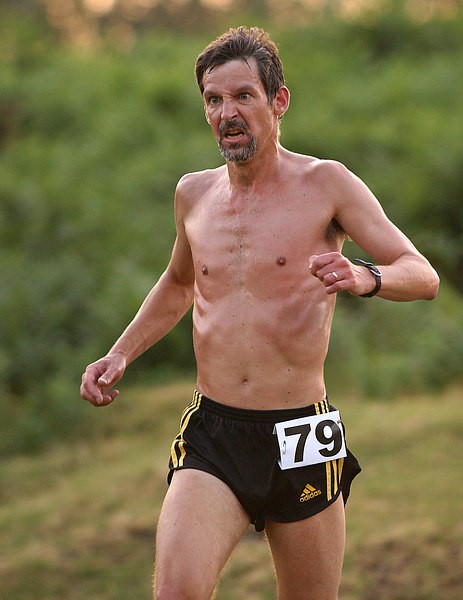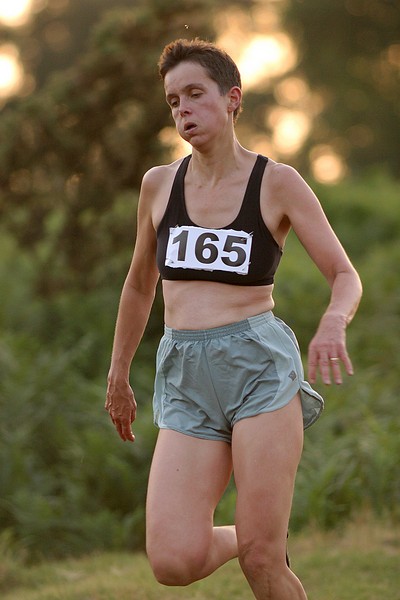The angle of the motion in relation to the camera axis is the single most critical factor. Runners coming directly AT or away from the camera can be stopped pretty well with slower speeds. Action coming toward or away at angles needs a bit faster speeds. Runners moving directly across the film plane demand the absolute fastest shutter speeds. This all relates to how much the subject is actually traversing, in relation to the film plane. Also, the image size of the object in motion is a factor, as is the distance from the camera to the moving object (the two are closely related).
If you shoot automobiles crossing a big bay bridge from 3/4 mile away, the small-appearing cars will be "frozen" at 1/60 second, because they are tiny specks in the overall composition. However, from 100 feet away, the same automobiles will require a speed of around 1/2000 second or faster to be "frozen". Why? Mostly image magnification or 'image size on film' (or image size on-sensor these days).
Using a kit lens, the first thing to do is to elevate the ISO setting to 800 to 1,000 under a wide range of circumstances, because the widest aperture will likely be only f/5.6, so you need some advantage to get the shutter speed up to the "fast" range, which begins at around 1/400 second and goes upward from there. Then, shoot the moving person coming head-on toward the camera, or at an angle coming toward the camera. If the person is running at right angles, swing the camera along with them, and release the shutter as you swing the camera. This is called panning or tracking with the subject.
As Kundalini mentions...often times a shot with just a little bit of blurring on the extremities looks preferable to a truly frozen shot. However, really,really fast shutter speeds like 1/4000 to 1/8000 DO HAVE a certain appeal to them....every single little thing is stopped...there's an almost eerie super-real look to human expression and movement at ultra-high shutter speeds. I used to shoot a lot of track and field, and that sport allows a lot of experimenting as to exact speeds and how action is rendered. In some events "fast" is 1/800 second, whereas in the hammer, discus, and javelin, 1/800 is really quite a "slow" speed, due to the speed of the equipment.















